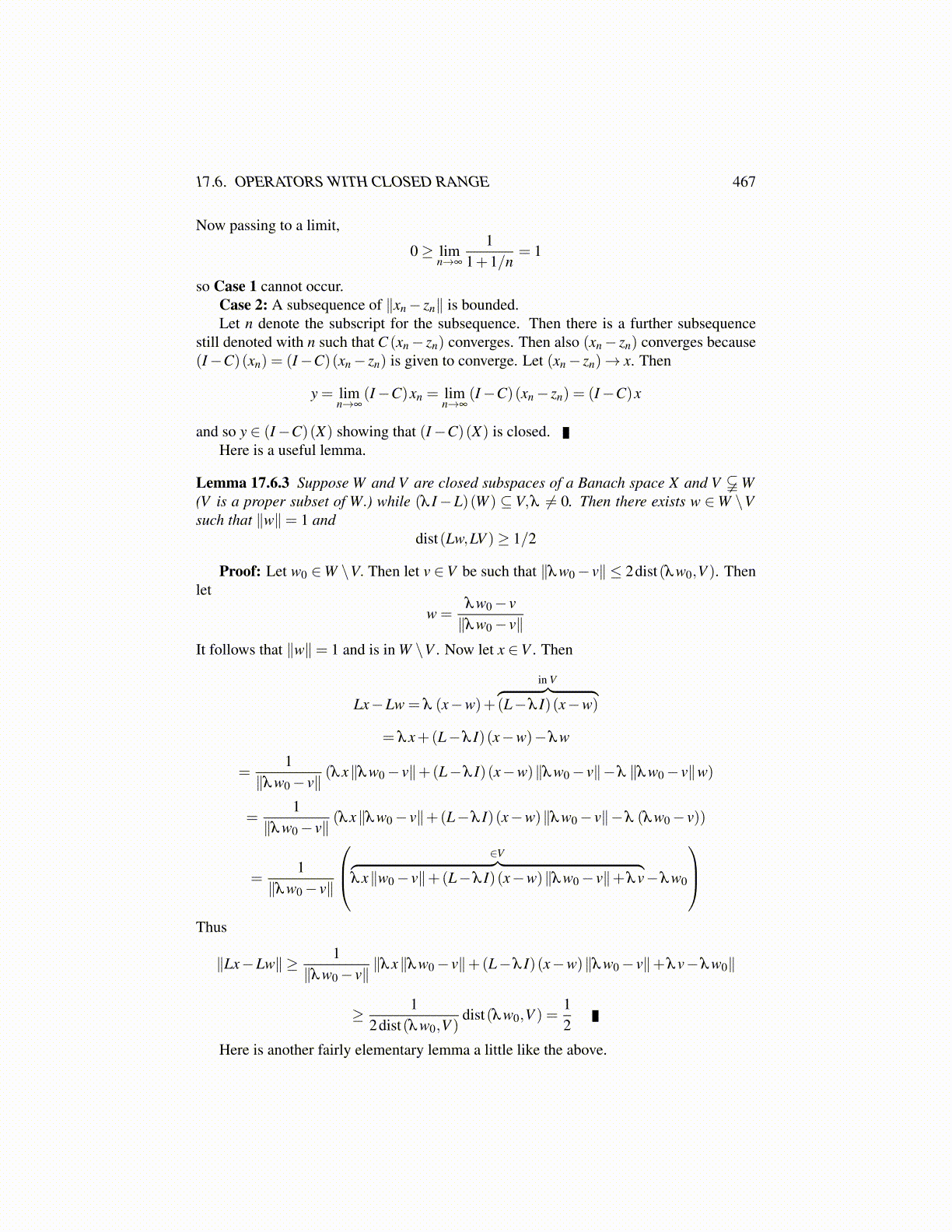
17.6. OPERATORS WITH CLOSED RANGE 467
Now passing to a limit,
0≥ limn→∞
11+1/n
= 1
so Case 1 cannot occur.Case 2: A subsequence of ∥xn− zn∥ is bounded.Let n denote the subscript for the subsequence. Then there is a further subsequence
still denoted with n such that C (xn− zn) converges. Then also (xn− zn) converges because(I−C)(xn) = (I−C)(xn− zn) is given to converge. Let (xn− zn)→ x. Then
y = limn→∞
(I−C)xn = limn→∞
(I−C)(xn− zn) = (I−C)x
and so y ∈ (I−C)(X) showing that (I−C)(X) is closed.Here is a useful lemma.
Lemma 17.6.3 Suppose W and V are closed subspaces of a Banach space X and V &W(V is a proper subset of W.) while (λ I−L)(W ) ⊆ V,λ ̸= 0. Then there exists w ∈W \Vsuch that ∥w∥= 1 and
dist(Lw,LV )≥ 1/2
Proof: Let w0 ∈W \V. Then let v ∈V be such that ∥λw0− v∥ ≤ 2dist(λw0,V ). Thenlet
w =λw0− v∥λw0− v∥
It follows that ∥w∥= 1 and is in W \V . Now let x ∈V . Then
Lx−Lw = λ (x−w)+
in V︷ ︸︸ ︷(L−λ I)(x−w)
= λx+(L−λ I)(x−w)−λw
=1
∥λw0− v∥(λx∥λw0− v∥+(L−λ I)(x−w)∥λw0− v∥−λ ∥λw0− v∥w)
=1
∥λw0− v∥(λx∥λw0− v∥+(L−λ I)(x−w)∥λw0− v∥−λ (λw0− v))
=1
∥λw0− v∥
∈V︷ ︸︸ ︷λx∥w0− v∥+(L−λ I)(x−w)∥λw0− v∥+λv−λw0
Thus
∥Lx−Lw∥ ≥ 1∥λw0− v∥
∥λx∥λw0− v∥+(L−λ I)(x−w)∥λw0− v∥+λv−λw0∥
≥ 12dist(λw0,V )
dist(λw0,V ) =12
Here is another fairly elementary lemma a little like the above.